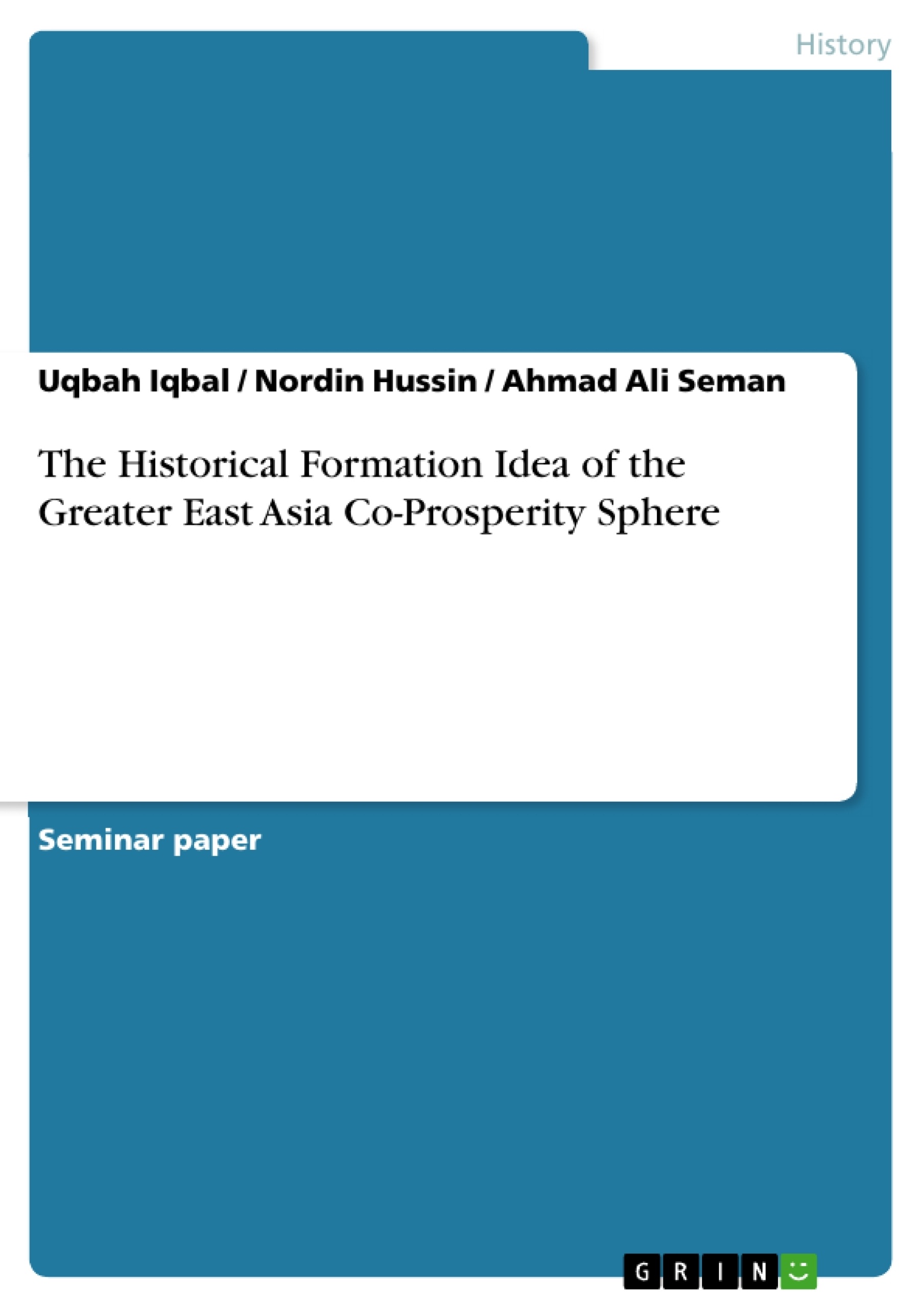The focus of this study is to dismantle the concept of the Greater East Asia Co-Prosperity Sphere during the Second World War. The methodology used is based on the research methods of the resources available in libraries. This concept arose when the trade dispute continues to be a political issue that contributed to the decline of Anglo-Japanese relations up by the Second World War. South Sea is the center of Japan's second most important investment after Manchukuo. Japan announced this concept on August 1, 1940 with two goals, namely freeing Southeast Asia from the exploitation of the Western powers and launching 3 A Movements. The system includes a combination of regional, cultural, economic and defense under Japan's efforts will be made as a buffer against expansion of Western imperialism. The basic aim of Japan’s policy is the establishment of a peaceful world based on Hakko Ichiu spirit (eight corners of the world under one roof). The first step to ensure this success is to establish a New Order in East Asia, with essentially located in Japan, Manchukuo and China. Although all Japanese leaders insist there are no ambitions of expansionism and imperialism against the West, countries that do not have the honesty and do not understand the true intentions of Japan should be taught through military force. Japanese government will be directly involved in exploiting and developing areas of the South Sea which is under its control.
Table of Contents
- ABSTRACT
- INTRODUCTION
- THE HISTORY OF THE GREATER EAST ASIA CO-PROSPERITY SPHERE IDEA
Objectives and Key Themes
This study aims to deconstruct the concept of the Greater East Asia Co-Prosperity Sphere during World War II by analyzing primary sources from local archives. The study focuses on the economic and geopolitical factors that drove Japanese expansion in Southeast Asia.
- The economic significance of Southeast Asia for Japan
- The role of Japanese imperialism in the region
- The origins and development of the Greater East Asia Co-Prosperity Sphere concept
- The impact of Japanese expansion on Malaya
- The strategic and political goals of Japan's South Seas Policy
Chapter Summaries
- ABSTRACT: This chapter provides a concise overview of the study's scope and methodology. It highlights the key objectives and research questions, emphasizing the use of local primary sources to shed new light on the Greater East Asia Co-Prosperity Sphere.
- INTRODUCTION: This chapter reviews existing literature on the Greater East Asia Co-Prosperity Sphere, emphasizing the study's contribution through its focus on local primary sources. It also introduces the historical context of Japanese expansion in Southeast Asia, highlighting the strategic and economic importance of Malaya.
- THE HISTORY OF THE GREATER EAST ASIA CO-PROSPERITY SPHERE IDEA: This chapter traces the origins and development of the Greater East Asia Co-Prosperity Sphere concept, examining the motivations and ideologies behind Japanese expansion. It explores the role of influential Japanese thinkers, political figures, and organizations in shaping the idea of an East Asian federation and the South Seas Policy.
Keywords
The primary keywords and concepts explored in this text include: Japanese imperialism, Greater East Asia Co-Prosperity Sphere, South Seas Policy, Malaya, economic exploitation, strategic goals, British imperialism, World War II, local primary sources, Japanese expansion, and nanshin.
- Quote paper
- Uqbah Iqbal (Author), Nordin Hussin (Author), Ahmad Ali Seman (Author), 2015, The Historical Formation Idea of the Greater East Asia Co-Prosperity Sphere, Munich, GRIN Verlag, https://www.grin.com/document/289015




